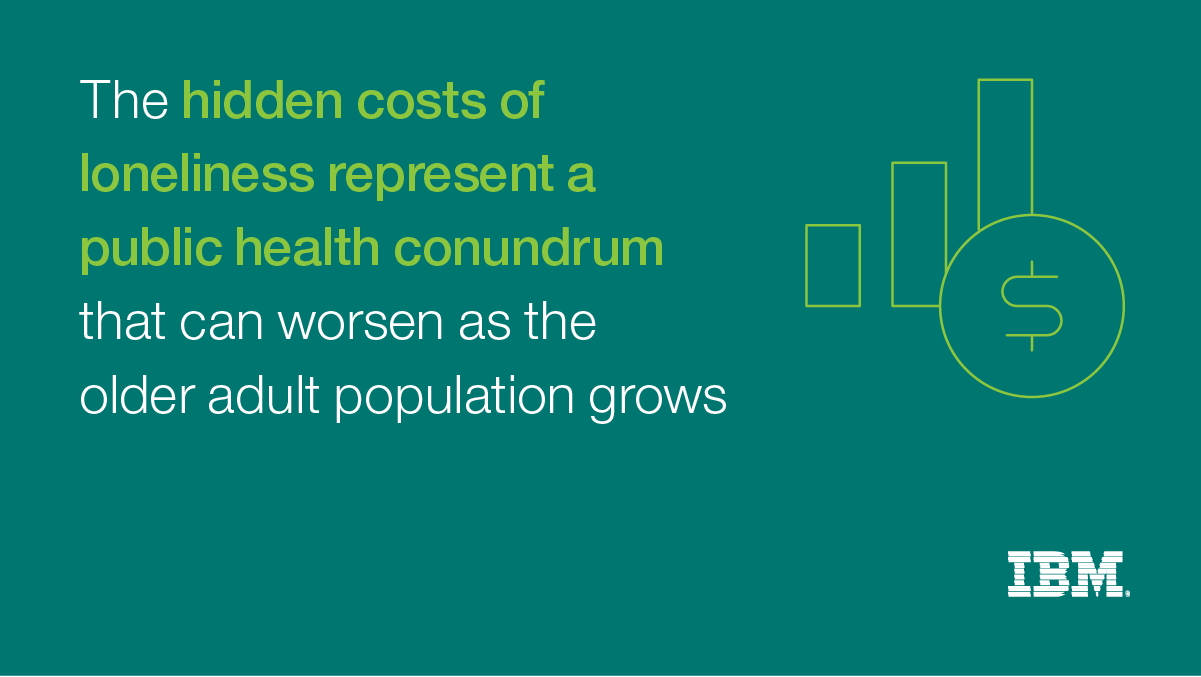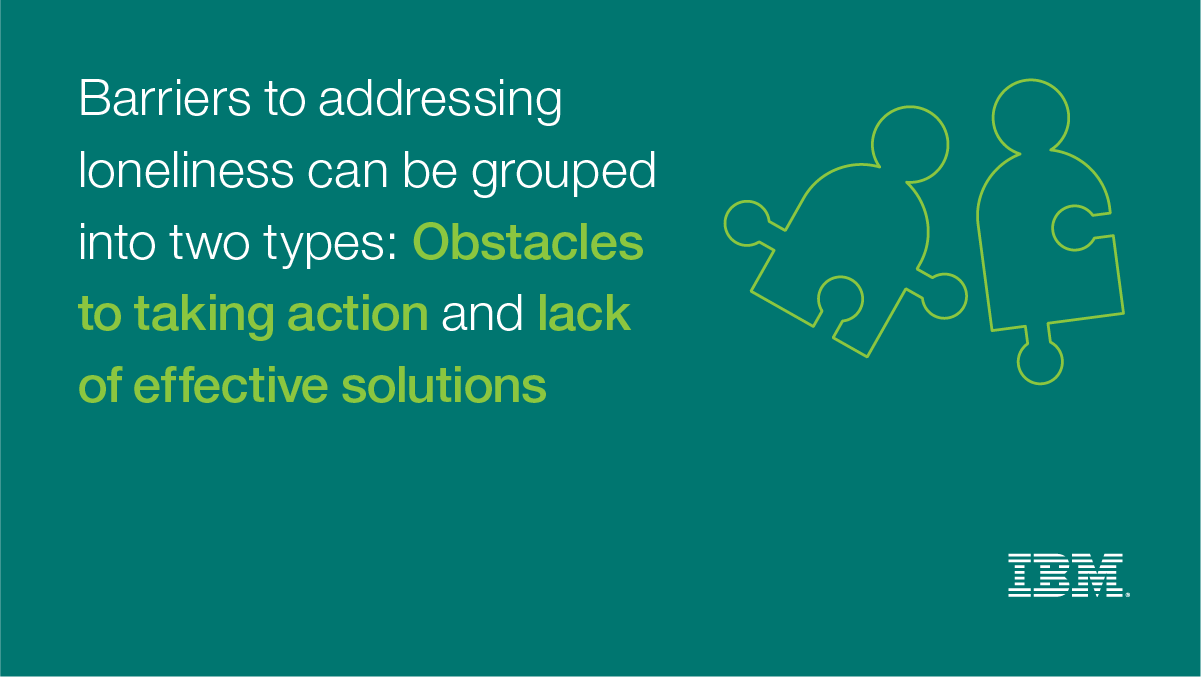Loneliness often isn’t recognized as an important health, societal and economic challenge.
Loneliness often isn’t recognized as an important health, societal and economic challenge. That must change. Research has shown that it can lead to health complications such as heart disease and dementia. But it can have equally serious social and economic consequences. And the aging population is especially at risk.

Loneliness in the aging population will impact several industries, and your organization likely has a significant interest in preventing, identifying and addressing causes of it, according to a new study from the IBM Institute for Business Value. Loneliness affects more than just the individual; it affects surrounding family members and caregivers. It also impacts the medical and government infrastructure working to balance the health of the community with ongoing resource and financial budget restraints.

The problem is complex, but the study reveals key insights that can help organizations work toward a solution:
One organization cannot solve the issue of loneliness on its own
Solutions need to engage and integrate many stakeholders, including infrastructure providers, government agencies, and healthcare and advocacy organizations. The collaboration of organizations across multiple industries can open new perspectives on how to combat loneliness in the aging population.
Customized, relevant content and services are essential
To successfully build and enhance social capital, solutions need to be tailored to the interests of individuals and adapted to their communities. Each person is unique with different preferences and no two communities are the same. A viable solution will encourage active engagement from all participants.

Personalization takes priority over simplification
Solutions should be able to adapt to the wide variation of technical fluency within the aging community. There’s a strong misconception that older adults are unwilling or incapable of using technology. But organizations need to realize that everyone retains the capability to learn. In fact, they should introduce personalized solutions to meet the needs of older adults.
Scalability is the brass ring
While many successful pilots and programs are in place today, they operate in relative isolation and require a high degree of customization, limiting their ability to expand. Future solutions need to offer both ease of customization and cost-effective scalability to provide sustainable services.
Organizations need to create solutions that encourage active engagement from older adults and help them find a renewed sense of purpose and connection with others. Programs that offer opportunities for post-retirement employment and educational pursuits could be a good start. Read the full report to learn more about potential solutions.
Meet the authors



